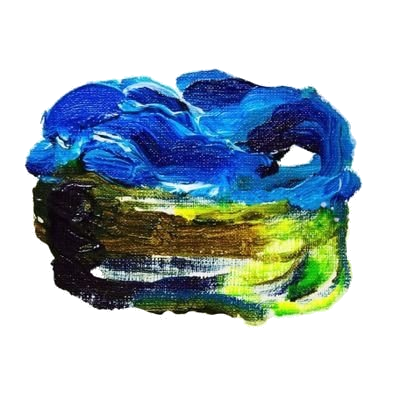
私は「個人史の視覚化」をテーマに制作を行なっている。
私は、体質として幻覚を感じやすく、また、カルト教団の2世として育てられたという背景を持っている。
そうした私の属性は、私の感じている、社会の中での生きにくさに繋がっているように思われる。なぜならば、幻覚は、私に対して現れる世界が実際とはズレている可能性を常に仄めかすし、カルト教団の教えは、私に男尊女卑の発想を押し付け、性に潔癖であることの要求してきたため、女性としての私の主体性を毀損してきたからである。
私は、そうした背景を負って生きる中で、美術における表現主義の伝統に救いを感じている。というのも、それは端的に内面の発露であり、ありのままの実存の肯定のように感じられるからである。
つまり私は、私の生きにくさの根底に位置するカルト教団による主体性の毀損を、表現主義の伝統を汲んだ取り組みを通して回復したいのだ。
また、そうした表現の成果物としての作品は、私の内面の発露であり、私の感じ受け取った世界をかたちにしたものである。そうした作品を他者と共有することで、私に対して現れる世界を確かめ、幻覚がもたらす現実とのズレを克服し、世界を信用したいのである。
これが私にとっての「個人史の視覚化」であり、それによって私は世界を信用し、また、主体としての居場所を作りたいと考えている。私にとっての美術の力とはそうしたものである。

